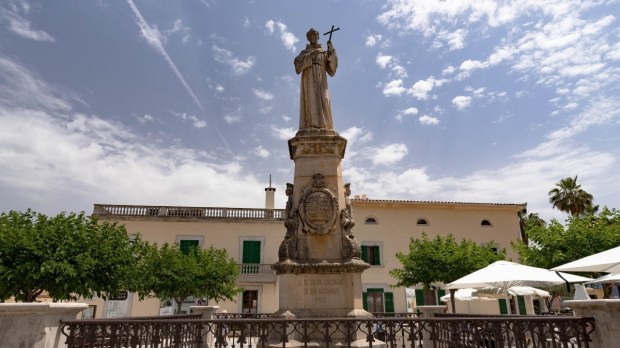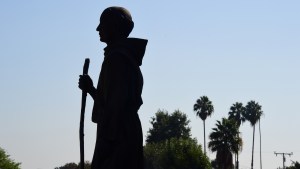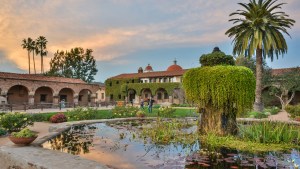When I learned that Pope Francis intended to canonize Junípero Serra, the Franciscan apostle of my native California, I was a little hesitant. Despite being an admirer of Serra’s faith, I had a feeling that maybe the timing wasn’t right.
Pope John Paul II’s beatification of Junípero Serra had already created a stir some 30 years earlier. At the time, debates about the morality of the European — especially Spanish — conquest of the Americas had begun to fill the air. The 500th anniversary of Christopher Columbus’ first voyage was on the horizon, and Serra, an 18th-century Spanish missionary, was seen by some as part and parcel of an oppressive colonial structure.
By 2015, the year of Pope Francis’ journey to the U.S., the debate around Serra and his role in bringing Christianity and European culture to California had become even more polarized. Perhaps, I thought, he could wait for a lower profile moment to make it official, a more convenient time when things were less tense and rational discussions could take place.
Now I’m glad he didn’t wait.
Coming to know Junípero Serra
I have a long history with St. Junípero. I am a 3rd-generation Californian and a Catholic, so I grew up hearing his name regularly. I have visited all of the missions he founded, except for San Fernando de Velicatá in Baja California (it’s on my bucket list). I have led pilgrimages to his final resting place at Mission San Carlos Borromeo in Carmel. I have read multiple biographies of him and read his own writings. I even created a whole website dedicated to California’s early history (including the missions). In doing so, I have become very familiar with Serra’s life and personality. And the more I learn about him, the more I appreciate him.
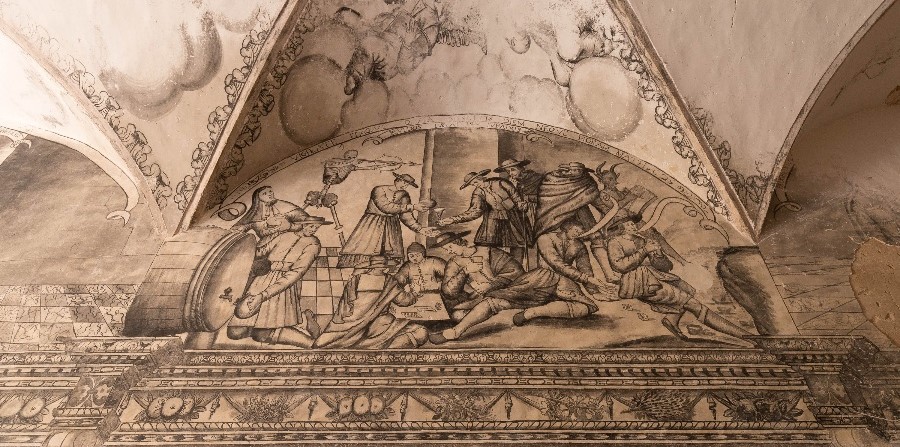
As a professor of Spanish literature, I see parallels between Serra and one of my favorite fictional characters, Don Quixote of La Mancha. Both started their grand adventures while in their 50s. Both held up ideals that seemed antiquated to some of their contemporaries. For Don Quixote, it was the revival of medieval chivalry. For Junípero Serra, it was the building of Christ’s kingdom on earth. In an ironic twist of history, both had their statues attacked in San Francisco’s Golden Gate Park during the summer of 2020. And let’s not forget that the creator of Don Quixote, Miguel de Cervantes, was buried in the Franciscan habit.
Serra, the realist
But the parallels only go so far. Serra was an idealist, like Don Quixote, but he was also a realist. He had to live in the real world. And unlike the fictional Don Quixote, Junípero Serra was a man of flesh and blood with all the complexities of any human being. He believed in lobbying government authorities but ultimately put his faith in prayer. He accepted the use of corporal punishment at the missions but did something unheard of by insisting that the Kumeyaay warriors who had killed his beloved brother priest be pardoned. And although Serra had dreams of the future, he knew he had to build in the present.
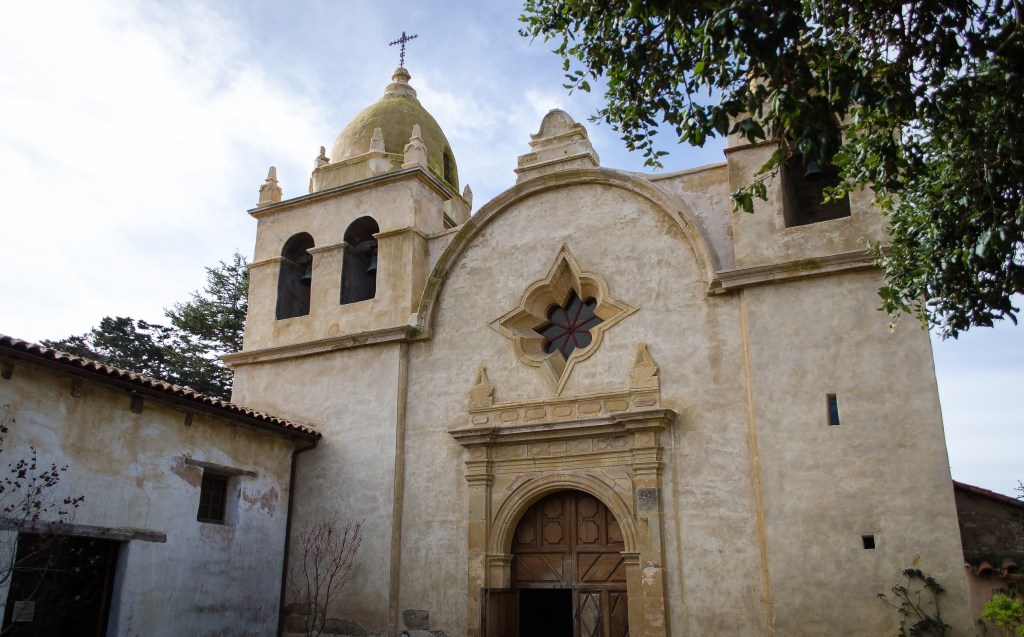
Between 1768 and 1784, Junípero founded nine missions along the coast of California. His goal was to create communities where indigenous people could be educated in a Christian way of life. In order to do so, he had to work within the administrative structures and bureaucracy of his time. He had to collaborate with others, rely on them, lead them, and compromise with them. Along the way, he continually risked being misunderstood. Many of his contemporaries accused him of being too confrontational with political leaders in pursuit of his goals, while many today accuse him of being too accommodating to them.
But contrary to the popular image, Serra wasn’t a single-minded zealot. He had moments of discouragement and was unafraid of admitting them. He once related the following story to a dispirited brother priest:
One of our communities had begun matins, and shortly after they began, a friar went over to the guardian and said, “Padre, may I have permission to retire to my cell because I find that my heart is not in this?” The prelate responded, “Brother, for God’s sake stay in your place. I can assure you that if every person in the choir whose heart was not in it were to leave, there would be no matins, because everybody would leave. And I would be the first one to go.”
Junipero Serra: California, Indians, and the Transformation of a Missionary, Rose Marie Beebe and Robert M. Senkewicz, page 394
In 2018 I traveled to the Spanish island of Mallorca, the place where Junípero Serra was born. I visited the little house in the village of Petra where he lived with his parents and sister. I went inside the school he frequented as a frail young man. I climbed to the hilltop shrine to Our Lady of Bonany (the Good Year), where his friends and family went to pray for relief from devastating droughts (like the ones we have in California).
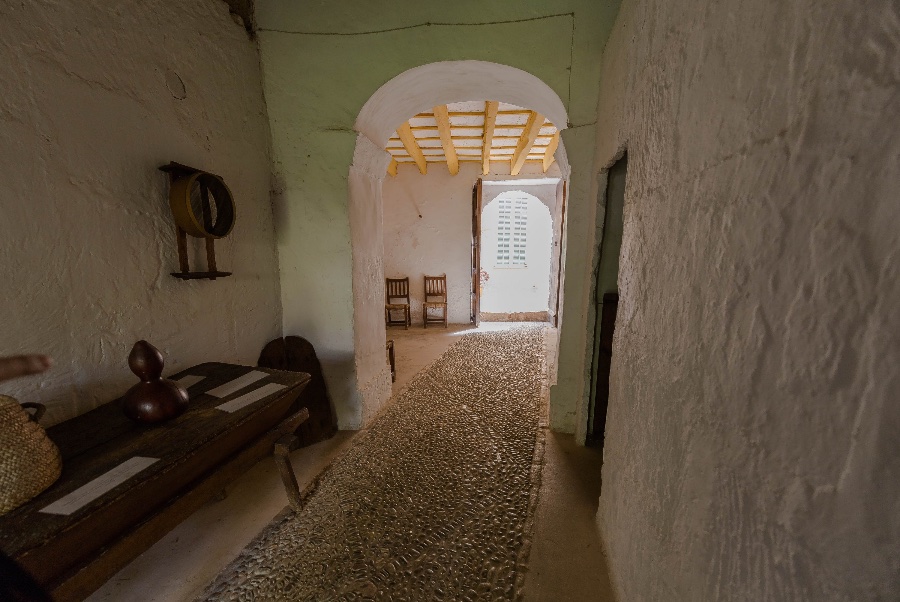
But the most striking thing of all was to meet the Amigos de Fray Junípero Serra, the group of custodians of his memory. They speak his language — mallorquí, a cousin of Catalan — and lovingly care for the physical places where St. Junípero lived. For the Amigos, he is not a symbol, but a cherished family member.
The battle over a saint
Back home in California, I watched protestors bent on attacking statues of Serra all over the state. Fueled by simplistic narratives, they hoped to correct current injustices by destroying icons of the past. The civil authorities, hoping to lessen tensions and appease the protestors, did their part by removing his statues from public areas. There was no room for debate about Serra’s legacy. Everyone believed that if they could make Serra disappear, he would stop stirring up trouble.
During his time on Earth, St. Junípero Serra certainly stirred up trouble. But like all of us, he was also a child of his time. He was conditioned by the circumstances of his birth, by the political system in which he was embedded and the traditions (and prejudices) he inherited. I have also learned enough about him to know that he was always focused on the good of others and that, given the opportunity, he would have laid down his life for any of the people he encountered on his journeys through California, Native or Spanish.
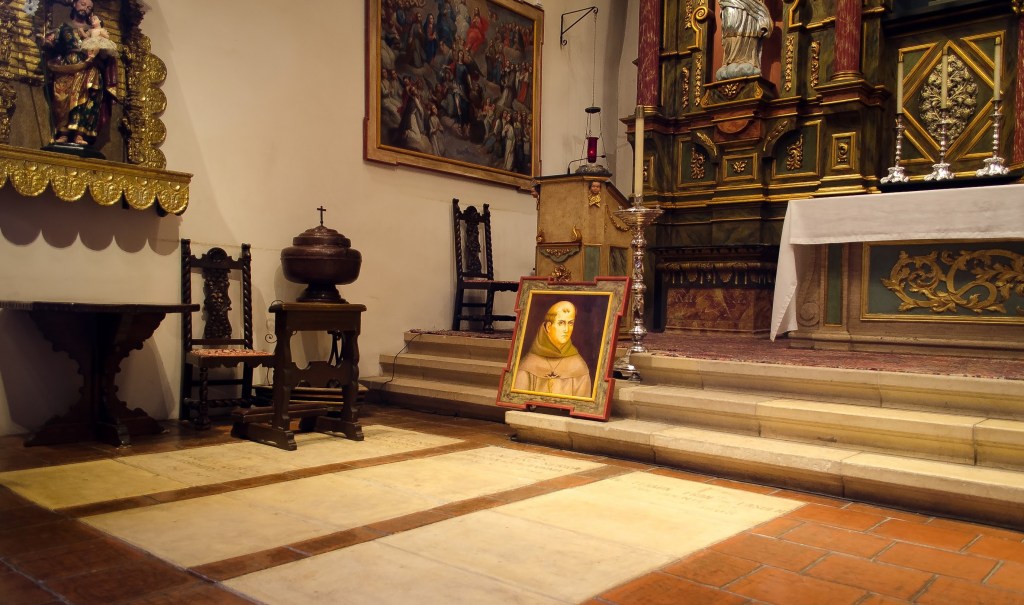
I teach classes on California’s Native and Spanish cultures at the large public university where I work. We read primary source documents in Spanish, including texts by and about Serra. And no matter what students think about the Spanish colonial presence in the Americas, they almost always come away with respect and admiration for Junípero Serra as a human being. They see his willingness to sacrifice for others, his deep faith in God, his courage in the face of adversity and his awareness of his own failures. Those are the exact things that the protestors and the civil authorities fail to recognize.
“Who do you say that I am?”
I now appreciate the wisdom of what the Holy Father did in not waiting to declare Junípero Serra a saint. While debating history is useful, we need examples of real human beings who — with whatever flaws they have — go forward, siempre adelante, seeking to share the Gospel. In Pope Francis’ words, they might stir up trouble — hacer lío — but they always point to a greater reality than themselves. By simply living their very human and often messy lives, they pose Christ’s question to us: “But you, who do you say that I am?”
There is never a convenient time to ask that question. Junípero Serra gave a clear answer by how he lived in his time. We, too, have to give our answer in the time we are given to live, or else we risk missing out on a grand adventure.
